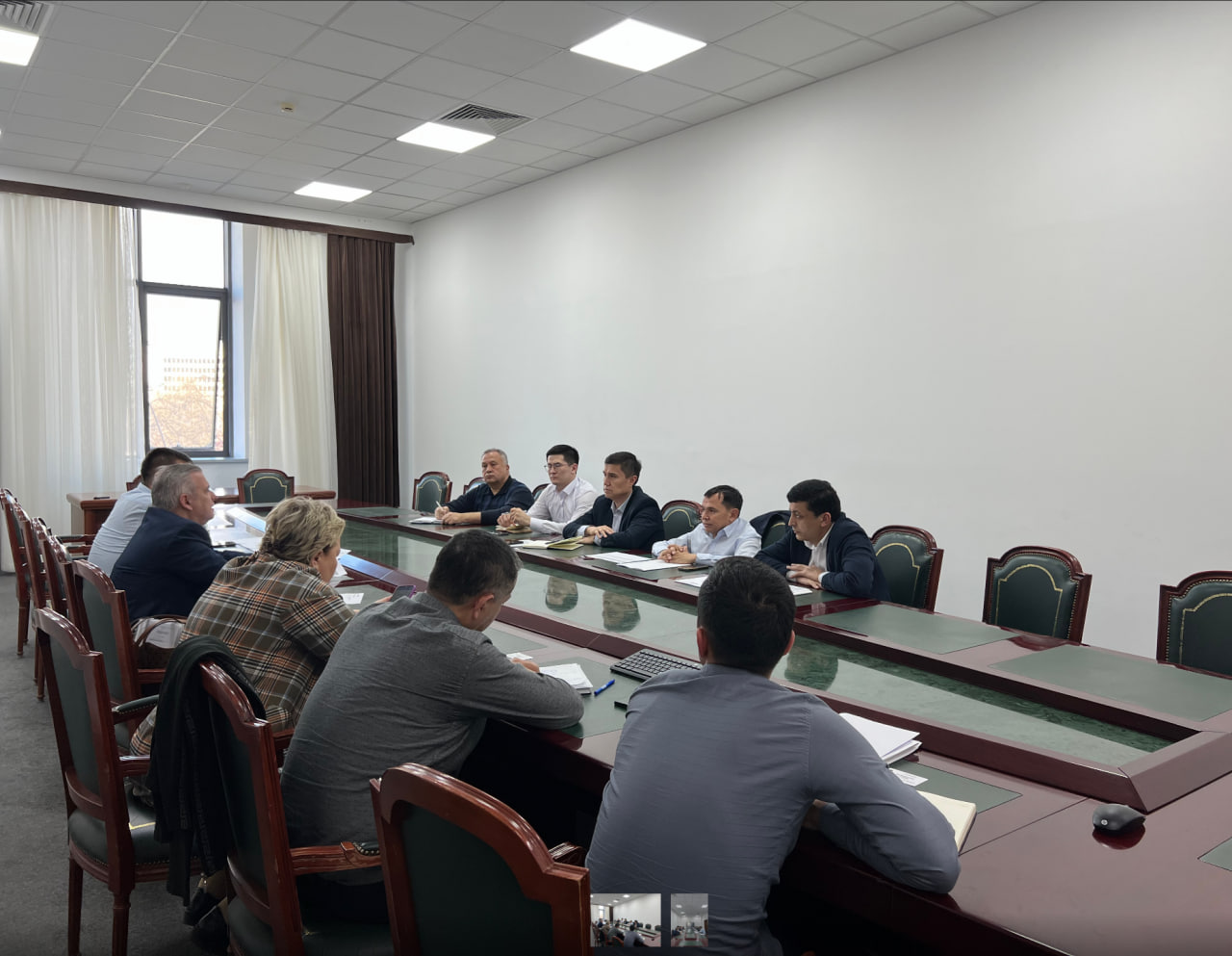The Central Bank kept the main rate at 14% per annum
The Central Bank left the base rate unchanged at 14% per annum. The decision was made to reduce the inflation rate to 10% by the end of the year, the regulator noted. The main driver of inflation this year was the rise in food prices.
Central Bank of Uzbekistan on 21 October to leave the key rate unchanged at 14% per annum, said the press service of the regulator.
The decision was made “in order to reduce the inflation rate to 10% by the end of the year in the context of accelerating economic growth, maintaining factors that increase prices in the economy and the uncertainty associated with the degree of their influence, as well as achieving a 5% inflation target in the future,” the statement said. …
Economic activity and aggregate demand
Since the beginning of the year, there have been positive trends in the dynamics of domestic and external demand due to increased economic activity and an improvement in the situation with the pandemic, the Central Banknotes.
In January-September, real GDP grew by 6.9%. Compared to the same period last year, the volume of industrial production increased by 9%, agriculture – by 4.2%, construction – by 4.5% and investment in fixed assets – by 5%. Incomes of the population in real terms increased by 10.4%.
At the same time, the recovery of economic activity in some sectors of the economy to the level before the pandemic will take a longer time. Domestic and foreign tourism, transport, car production (down 32.4% compared to nine months last year) and catering have not yet reached the 2019 level.
Full recovery of economic processes in these sectors in the future will be a supporting factor for high rates of economic growth, the Central Bank stressed.
The main factors behind the recovery in consumer demand in the economy during the year were financial incentives, the resumption of economic processes in the private sector and the growth of external economic relations against the background of the stabilization of the macroeconomic situation in the main trading partners. Retail turnover, reflecting the state of consumer demand, increased by 9.8% in real terms.
The volume of production of consumer goods in January-September increased by 10.9%, food products – by 18.3% and non-food products – by 6.9%.
The volume of loans issued by banks during this time increased by 33% compared to the same period last year and reached 119.5 trillion soums. The number of car loans issued to the population increased 1.6 times, microloans – 1.7 times and microloans – 2.3 times.
This served as an important channel for maintaining consumer and investment demand, the Central Banknotes. At the end of this year, growth in credit investments is expected, proportional to the growth of nominal GDP in the range of 16-18%.
External economic conditions
Over the past period this year, the global economic environment has seen an acceleration of inflationary processes against the backdrop of significant increases in prices for basic food and energy resources, as well as tightening monetary conditions in response to most developing countries.
In January-September, the volume of exports (excluding gold exports) increased by 34% over the same period last year. In the context of accelerating economic activity and a full resumption of production processes in key sectors of the economy, imports increased by 18.7% over the same period last year and reached the level preceding the pandemic.
In addition, the volume of remittances to the country in nine months amounted to $ 5.7 billion, an increase of 34.2% compared to the same period in 2020 ($ 4.3 billion) and by 29% compared to the corresponding period of 2019. ($ 4.5 billion).
The exchange rates of the national currencies of the main trading partners (with the exception of Turkey) have not changed significantly since the beginning of the year and did not cause a gap in the real effective exchange rate.
Inflation and inflation expectations
At the end of September, annual inflation amounted to 10.8%, which is slightly higher than the forecast in the baseline scenario, the Central Banknotes. The main driver determining the dynamics of general inflation this year was the change in food prices – it made an increasing contribution to the annual inflation rate of 6.1%.
The annual growth rates of prices in the groups of non-food products and services, consisting of components with stable dynamics, in September amounted to 7.7% and 8.8%, respectively, which contributed to the deceleration of general inflation.
The level of core inflation, which is sensitive to monetary factors, has formed below the general level of inflation since June and amounted to 9.2%, having decreased by 3% since the beginning of the year.
The inflationary expectations of the population for the next 12 months in September fell to 15.8%, and of business entities – to 14.7%. They still remain above the general inflation rate, as in many other countries, the Central Bank emphasizes. This is primarily due to the high growth rates of prices for food products and energy resources.
At the end of September, prices for food products increased by 14.4% in annual terms, energy prices – by 23.2%. The rise in prices in these groups of goods is the main factor that has a negative impact on the downward trend in overall inflation.
Monetary conditions
As a result of a number of changes introduced by the Central Bank in the operations of monetary policy and related operational measures, the weighted average interest rates in the money market, after a significant decrease in May-July, amounted to 13% in August and 13.3% in September. within the limits of the interest rate corridor and approached the main rate of the Central Bank.
An increase in the activity of banks in the money market was observed due to the expansion of the interest rate corridor. In particular, transactions were carried out in the amount of 8.4 trillion soums in August and 7.6 trillion soums in September (an increase compared to July by 46.6% and 31.3%, respectively).
At the end of September, the average profitability of deposits on household deposits amounted to 20.3%, on funds of legal entities – 15.3%. Real interest rates calculated on the basis of inflationary expectations of the population also remain positive – at the level of 3-4%.
This contributed to the growth of total time deposits in the national currency by 29.5%, including time deposits of individuals in the national currency by 51%.
Due to high economic activity and demand, interest rates on loans increased slightly compared to the beginning of the year. The weighted average interest rate on loans to the population in September amounted to 21.4%, and on loans to legal entities – 21.1%.
Forecast and risks
The transition of headline inflation to declining dynamics, the formation of core inflation within the forecasted range and the maintenance of the current moderately tight monetary conditions will be factors contributing to the achievement of the forecast inflation rate of 10% by the end of the year.
Maintaining the growth of loans allocated to the economy within the growth rates of the nominal gross domestic product in the coming months will not exert additional pressure on the prices of the domestic market and the exchange rate of the national currency.
The measures taken by the government to stabilize the prices of basic food products will minimize the impact of the transfer of price increases in external markets to the price level of the domestic market.
Другие новости и события
Any use (reproduction, publication, copying, reprinting, distribution, translation, broadcasting, processing and other methods of distribution) of the materials of the Investment Portal - Invest.gov.uz, without indicating the original source and a link to the Portal is strictly prohibited!








